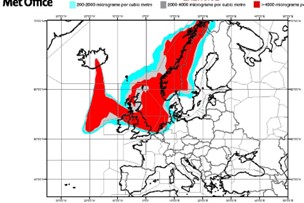Lead supervisor: Helen Dacre, Department of Meteorology, University of Reading
Email: h.f.dacre@reading.ac.uk
Co-supervisors: Ben Evans, Met Office; Tom Frame, Department of Meteorology, University of Reading
This PhD project will explore the science of predicting environmental hazards, including volcanic ash, chemicals, and radiation. These hazardous substances pose significant risks to human health, wildlife, and infrastructure. Our project focuses on advancing the accuracy of predicting their dispersion patterns, ensuring more effective emergency response strategies. Collaborating closely with institutions such as the Met Office, this research project merges theoretical exploration with practical applications, bridging the gap between scientific inquiry and real-world safety protocols.
The primary objective of this PhD research is to pioneer innovative techniques for predicting the concentration and trajectory of hazardous substances in the atmosphere. By using advanced ensemble forecasting methods, the project aims to enhance the reliability and precision of dispersion forecasts. Special attention will be given to representing uncertainties inherent in environmental hazard predictions, providing decision-makers with more comprehensive and actionable information during emergencies.
The key objectives of the project are to:
- Develop and refine ensemble forecasting techniques tailored to environmental hazard prediction.
- Collaborate with industry to integrate real-world data and refine the accuracy of dispersion models.
- Translate complex scientific findings into practical insights for emergency response decision-makers.
- Evaluate the reliability and effectiveness of the developed forecasting methods through comprehensive analysis.
- Contribute to the development of operational dispersion ensemble prediction systems in collaboration with the Met Office.
As a PhD candidate in this project, you will be part of a research project that directly impacts public safety and emergency response strategies. Engage in cutting-edge research and collaborate with experts in the field, gaining valuable insights into real-world applications of your work. This project offers the opportunity to make a tangible difference in building the next generation of environmental hazard warning systems.

Current VAAC volcanic ash hazard chart showing the location of volcanic ash during the 2010 Eyjafjallajokull volcanic eruption
Training Opportunities
The student will visit the Met Office several times during the project to discuss the design and implementation of experiments using the Met Office Dispersion Model.
Student Profile
This project would be best suited to a student with a strong physical sciences or mathematical background. The student will not need to have prior coding or data analysis expertise as full training and support will be given, but they should be keen to run complex dispersion models and perform careful analysis work on the model output.

